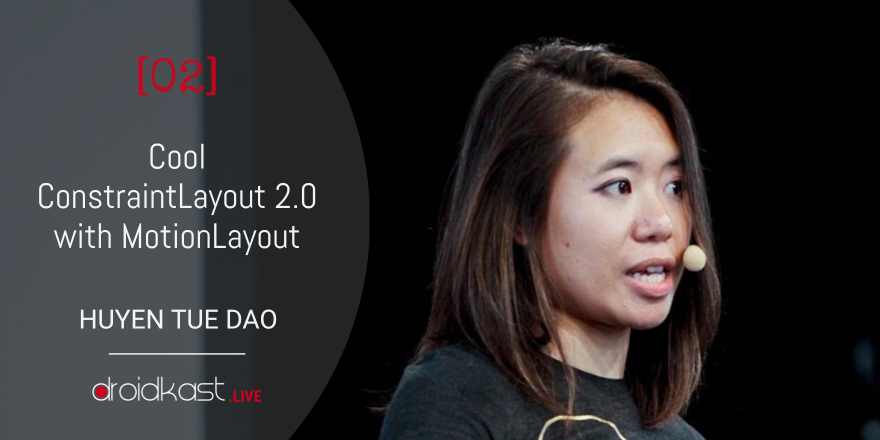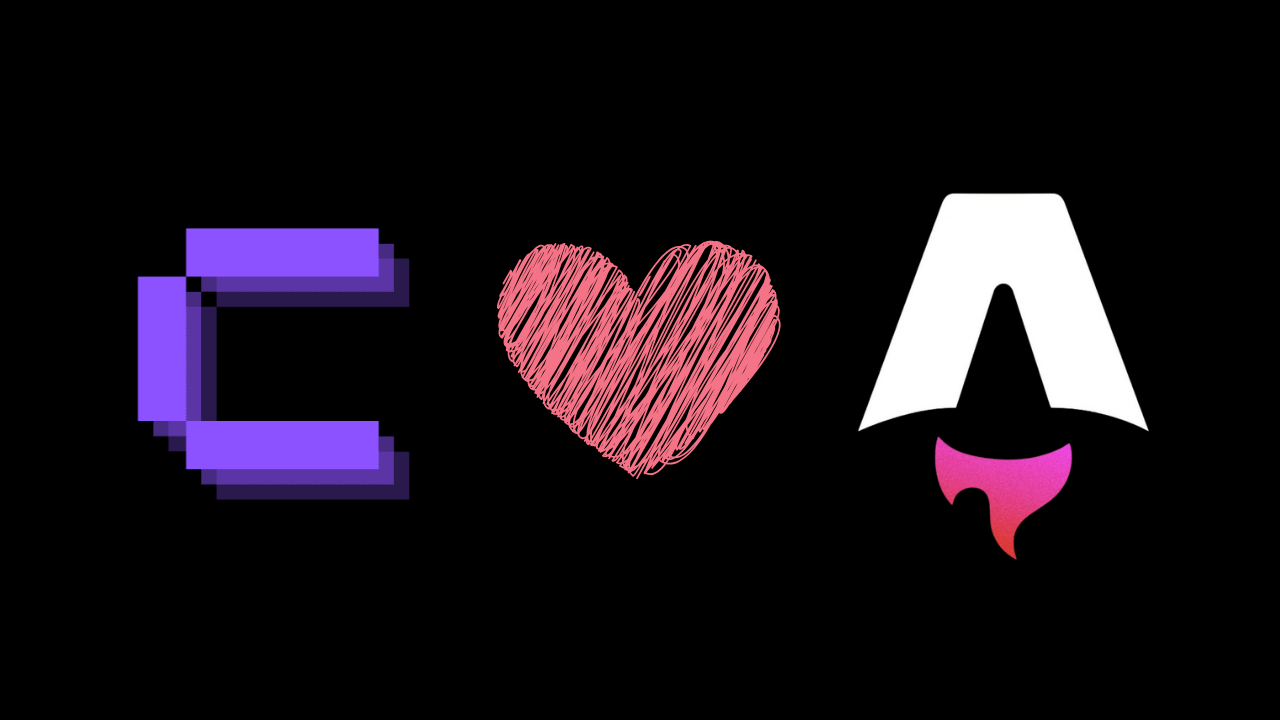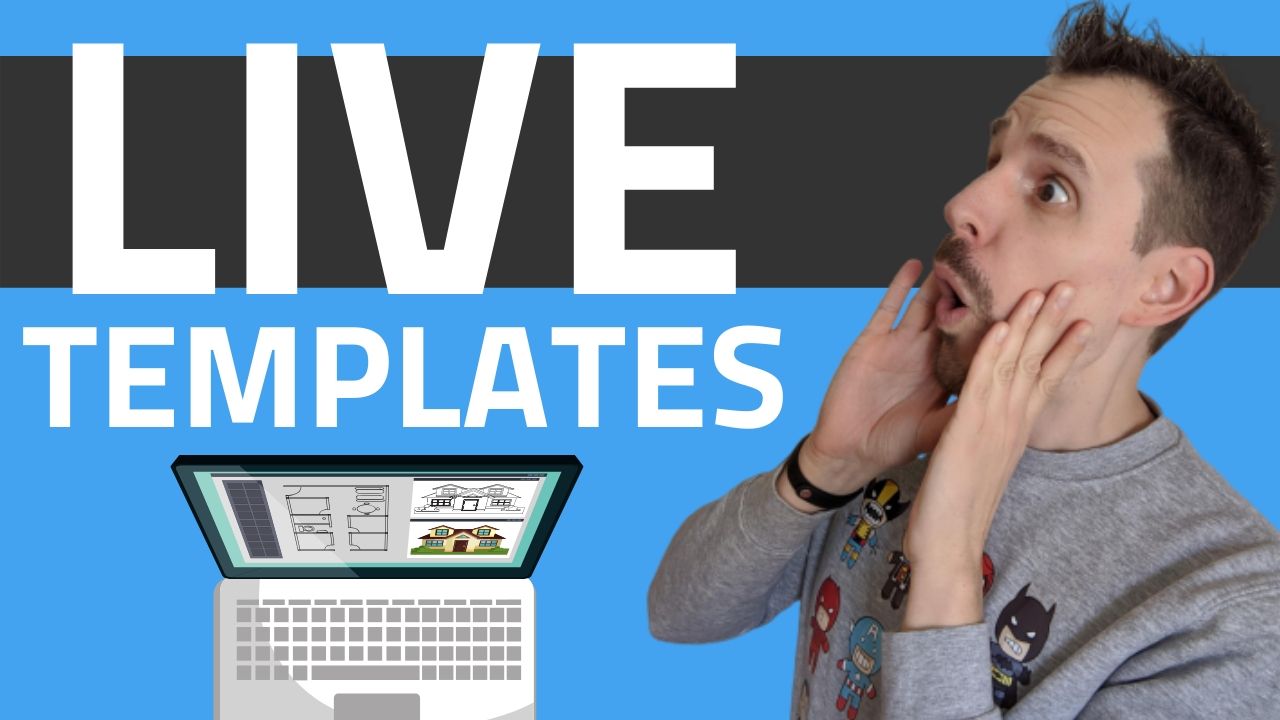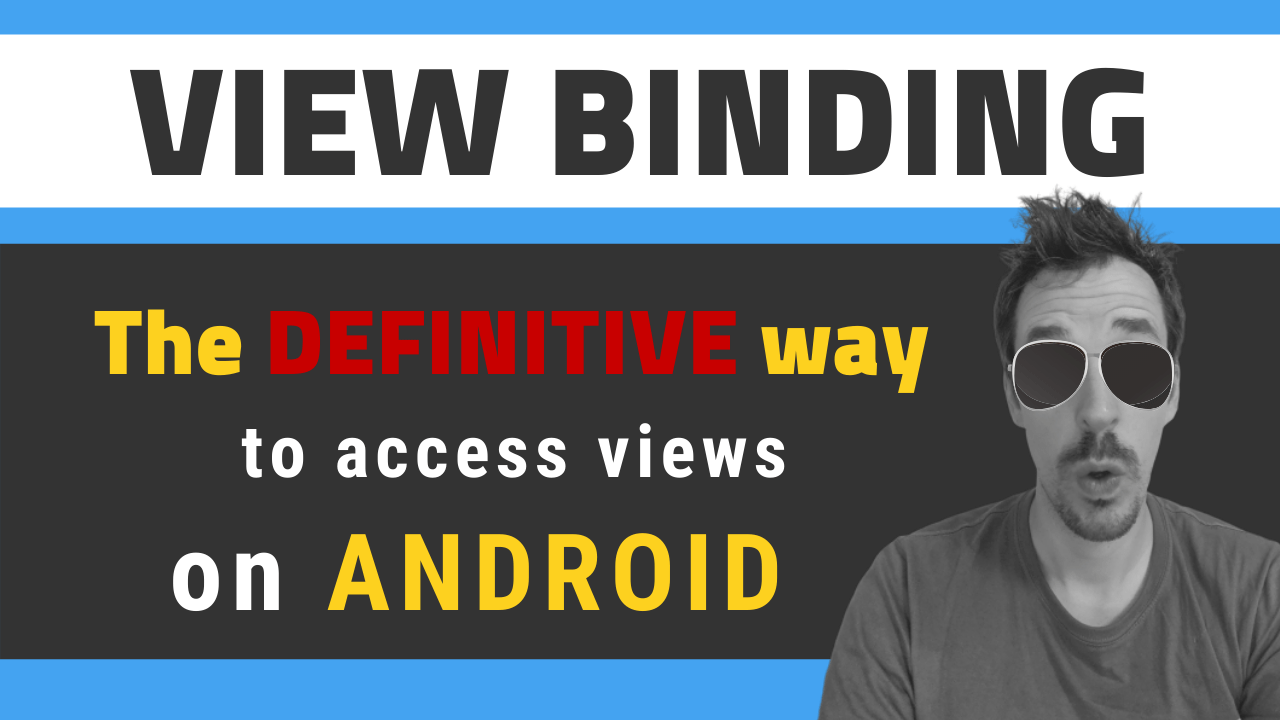· 3 min read
ConstraintLayout 2.0 with MotionLayout, with Huyen Tue Dao [Droidkast LIVE 02]

Huyen came to tell us how she became a software developer, her experience becoming an Android developer, and a speaker. She also told us about some of her hobbies.
Her talk was about the new features inside ConstraintLayout 2.0, with a special focus on MotionLayout. We saw how MotionLayout can help you create awesome animations in no time.
Huyen is currently working at Trello, which many of you may use. She is also the co-creator of Android Dialogs: a YouTube channel where they interview many Android developers. You probably have seen her in one of the many events she attends.
1. The video
You can watch the full episode here:
https://www.youtube.com/watch?v=CAObt5ePIpg
2. The interview: Main questions
- Tell us a little about your story. Where are you from, how was your childhood, and what led you to start in software development?
- I think that when I knew about you, you already were in Trello. How was your career progression to get there? What do you think helped you the most?
- I can imagine that giving to the community (talks, interviews, events) has helped you in many ways. Would you recommend it to anyone?
- Did you have to fight many fears to be able to do it? Things like impostor syndrome, public speaking, and the frightening post-talk questions… :D
- I’m especially interested in Android Dialogs, your interviews channel with Chiuki. Doing on-site interviews seems especially difficult, because you have to take the equipment with you… How do you organize those talks?
- Apart from doing all those great contributions, what other hobbies do you like to spend your free time on? I read something about games :)
- And what about food and cooking? I see you sometimes share your new recipes.
- When you think about your long-term future, how do you see it? Do you think you’ll continue in software development for the rest of your career?
- If you had to recommend just one thing to our listeners, about anything, IT related or not, what would it be?
Questions from the audience
- What’s your routine or tricks to learn new things?
3. The talk: Cool ConstraintLayout 2.0
ConstraintLayout has had quite a year in 2018: the release of 1.1 in April and the announcement of 2.0 in May. The ConstraintLayout team has certainly kept us busy with frequent updates, optimizations, and new features including groups, barriers, circular constraints, and optimizations. As if that wasn’t enough, ConstraintLayout 2.0 now adds a Helpers API and the MotionLayout, which builds on the capabilities of ConstraintSets to give developers featured-packed and fine-grain control in building animated transitions within a layout, including keyframe animation.
In this session, we will look at concrete examples and code (and also adventure to the design view and motion editor) to show how to use these features to do really cool things with ConstraintLayout. We’ll also talk about the features in ConstraintLayout’s future.
Link to the repository: Cool ConstraintLayout 2.0
4. Raw transcription
The transcription has been taken from YouTube automatic subtitles, so it’s far from perfect. In any case, if you prefer reading it, here it is:
5. Links mentioned during the interview
6. Subscribe to Droidkast.LIVE
If you don’t want to miss the following episodes, join the mailing list to receive new updates here.
I’ll come back soon with new awesome guests!



![[LIVE] Answering all your questions: MVVM, Work-Life balance, career progression, football..? 😂](/_astro/stencil.wordpress-3.B__ZrLFz.jpg)